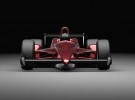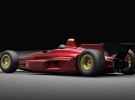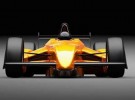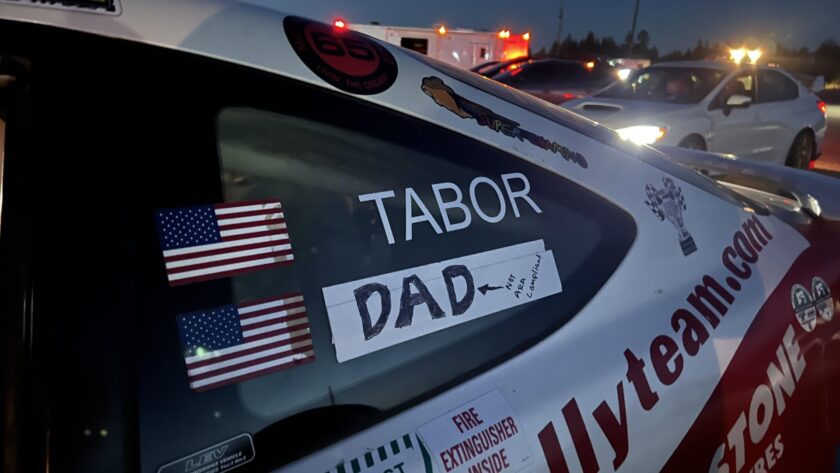 Three significant things came up this week on the 2012 chassis decision for the IRL. An article came out in USA Today with comments from Brian Barnhart, a chassis design criteria was released by the IndyCar Series and pictures of three chassis concepts started circulating from Dallara.
Three significant things came up this week on the 2012 chassis decision for the IRL. An article came out in USA Today with comments from Brian Barnhart, a chassis design criteria was released by the IndyCar Series and pictures of three chassis concepts started circulating from Dallara.
The Leagues Design Criteria
Safe: The new chassis must adhere to the league’s already high safety standards while exploring new technology to improve safety in all aspects of the car.
Raceable: The new chassis must continue to produce the exciting racing that has become signature of the IZOD IndyCar Series while not affecting other cars on track (i.e. less sensitive to the turbulence).
Cost-effective: The league continues to work to reduce the cost of participation for teams in the IZOD IndyCar Series, which remains an important priority in this economic climate. The new chassis must have a price point that adheres to that goal.
American-made: The new chassis must be built in the U.S., preferably at an Indiana-based facility.
Less mass/more efficient: A lighter chassis with less mass that produces the same aerodynamic effect in an efficient way.
Relevant technology: The league would like the new chassis to be relevant to the future of the consumer auto industry; innovative technology that is born on the racetrack and can translate to consumer cars.
Modern look: More space for sponsor logos, cars easily identifiable.
Green: The Indy Racing League prides itself on its role in the greening of racing and wants to maintain its position as a leader in environmentally-friendly initiatives with this chassis.
Along with their design criteria, Brian Barnhart has announced that the IRL would need to make their decision on the 2012 chassis in 3-months, which would be in early May. Brian also told USA Today that Swift, Lola, Dallara and Delta Wing have all expressed interest in providing the next IndyCar spec chassis.
Dallara has been working closely with the IRL and has announced that their 3 chassis concepts they are working on all weigh in at 1,390 pounds (down from 1530 pounds), cost $385,000 (down from $700,000) and would be built in Speedway, Indiana. As a function of the lighter chassis the overall horsepower needed would drop from 630 HP to 570 HP. This goes in line with what Honda has been saying that they are prepared to develop as their 2012 V-6 engine.
What About the Engine?
All of this seems to be a bit premature though. Correct me if I am wrong, but at present the IRL has not announced an engine spec for 2012, so any work done on chassis concepts are just that, concepts. I guess Swift, Lola and Dallara are going with a working concept of Honda’s stressed V-6 engine. Delta Wing has already announced that they are designing their car around non-stressed, inline 4-cylinder capable of producing 325 HP which they claim will be enough to get their ultralight tub up to 230 mph.
That may be an error. For years now Honda has indicated that they wanted engine competition in the series. At present though, the IndyCar Series has not been able to woo another potential engine manufacturer to come play in Honda’s playground. The VW Group just recently announced they were no longer interested, setting aflame our hopes that Audi or Porsche would show up at Indy.
Brian Barnhart told USA Today that two other engine manufactures have expressed interest, but they are not interested in competition. They want to replace Honda outright as a single source spec engine supplier. Given the IRL’s track record in rewarding the loyalty of their partners, I would see this as unlikely.
What About Delta Wing?
This whole shamazel seems to be targeting one thing, the Delta Wing unveiling in Chicago next week. While the IRL and their partner Dallara have remained silent, momentum has been growing behind this wingless Delta Wing car which is approaching the whole racing thing from an entirely different angle with a freakishly ultralight tub, ground effect undercar downforce generation, a tiny non-stressed engine and some serious design pedigree behind the whole operation. Delta Wing LLC is jointly owned by the majority of the car owners in the series and has the potential to blow up the works at 16th and Georgetown if the Delta Wing car is not selected as the 2012 pot-o-gold.
Since Delta Wing seemed to be the only entity actually talking about the 2012 car, and with their big unveiling coming next week, Dallara and the IRL took this week as their opportunity to try and preempt the Delta Wing car announcement and appear like they are actually doing something.
The Dallara concepts in the gallery below show off what they are thinking, but they appear to be nothing more than USF1 style concept drawings.
















This is the only true indy type and open wheel race car design concept for the 2012 car.
The delta design is not only ugly but, Its also an engineering nightmare aerodynamics and on track handling and front downforce wise.
Its also not a “true” open wheel race car in the other design concepts ive seen online and that have been officially unveiled by the manufactures.
The design concepts on this page are great and more reasonable and they incompass what an open wheel indy car is all about!
Whereas I agree that the Delta Wing concept car revealed at Chicago is uglier than sin and it is NOT an open-wheel car, aerodynamically it is super slippery, and the underbody is designed to produce all of the downforce instead of relying on external wings and it is very capable of turning. Most of the mass is in the back, leaving the nose super light. Not much steering force is required to change the direction of the car. In addition to traditional steering input via the front wheels, Bowlby also plans on using a torque vectoring differential which could help the design be even more nimble than the current Dallara.
I will not be one to defend the appearance of the DW, but I will defend its engineering concepts.